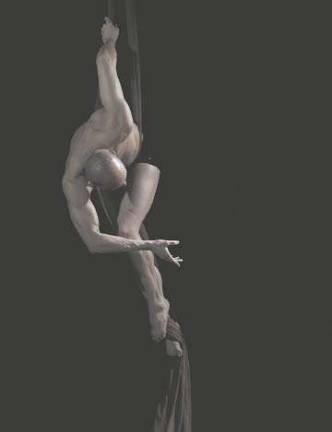Jubilation in the Jungle

Javier Dzul's Mayan rituals rewrite life out of chaos
Mexico Maya, the latest work from choreographer Javier Dzul, would be unfathomable without knowing that Dzul grew up in the jungle. The title of the work refers to the Mayan tribal community in Mexico where Dzul was raised and learned Mayan ritual dance. Conceived in three sections, Mexico Maya features Cirque de Soleil-type aerials, contortionists, and modern dance set to a soundtrack of Mayan text, Mexican ballads, and plaintive American song, and it premiered at the Baruch Performing Arts Center on January 24.
The jungle epitomizes chaos. Life-forms of every shape and size slither and hang, snaking around each other with no perceptible rules, contributing to a writhing, organic, lawless whole. That, in so many words, is the visual effect of Mexico Maya. It's not everyone's cup of tea, but it's thrilling for those who are willing to disregard the ordinary limits placed not only on dance but on the human body as well.
Dzul himself looks like Yul Brynner. He's got a bodybuilder's torso and the gaze of a hunter. For all his regal masculinity, however, his dance recalls a belly dancer's undulation; facing upstage, he flexes his spine and ripples the muscles beneath his shoulder blades. He appears mythical. In an aerial solo, he dives to earth wrapped in brown silk, stopping inches above the ground to ascend yet again.
Dzul's talents and persona are supremely idiosyncratic and powerfully unnerving. He is so unusual, however, that he is most effective when there is no one else on the stage; since there are frequently other people on the stage, this creates a problem for the show. Two pas de deux were less effective than his solos but still managed to convey his jungle vision of interacting organisms.
The weak point are the group numbers, which also, coincidentally, comprise the modern dance portion of the show. It's not clear whether the problem lies with uninspired choreography or company members who are simply not up to what Dzul requires of them. One notable exception is Brian Binion, whose precise, yet liquid, dance not only expresses Dzul's intention but also bears his own signature.
In spite of the show's shortcomings, Mexico Maya does nothing short of rewriting the history of the human body as a thing that emerged from a non-human place. Imperfect yet haunting, its best images will never leave you.